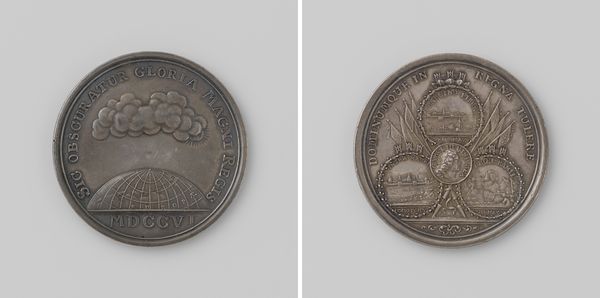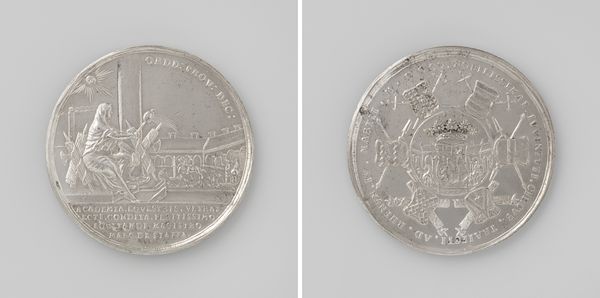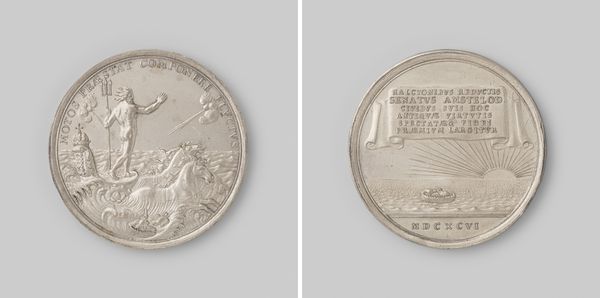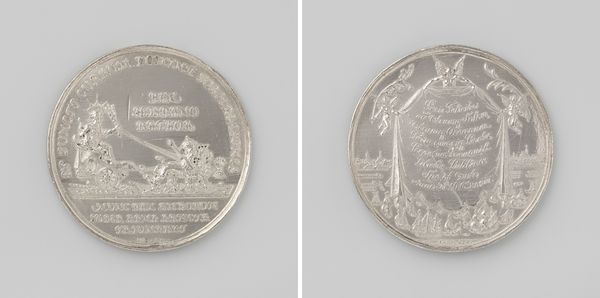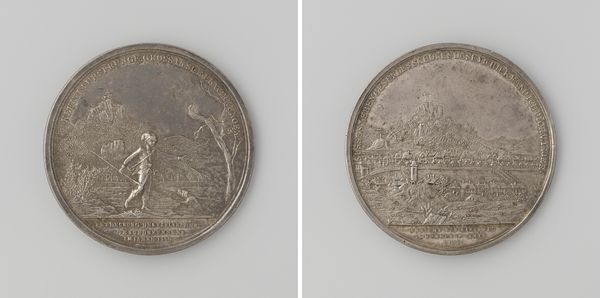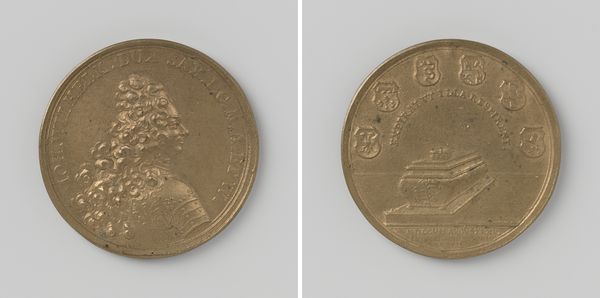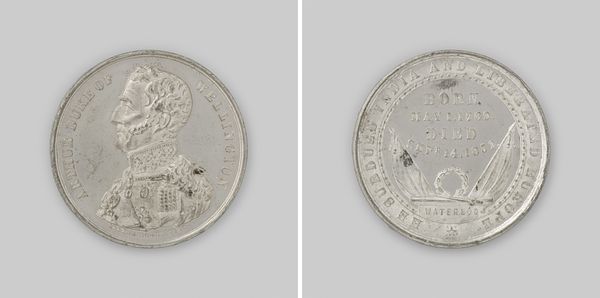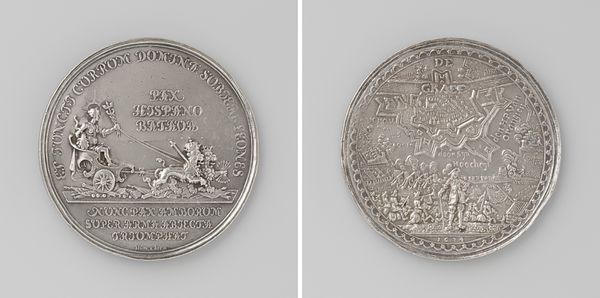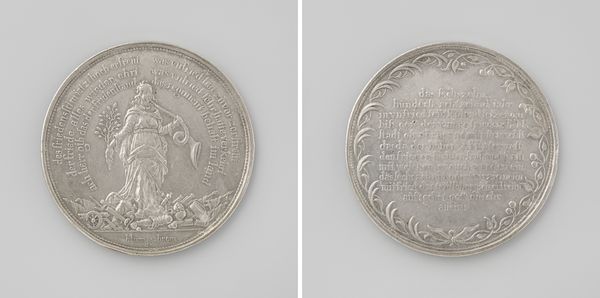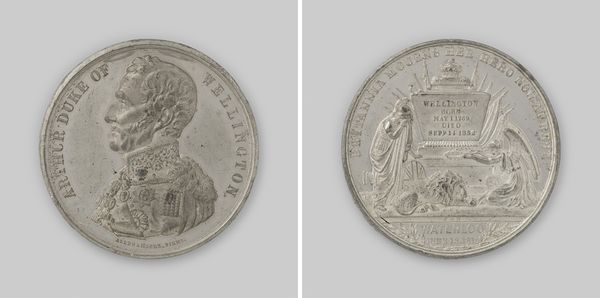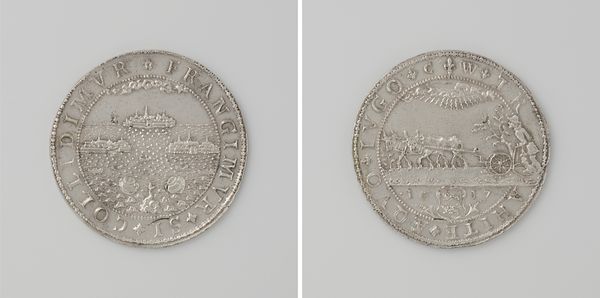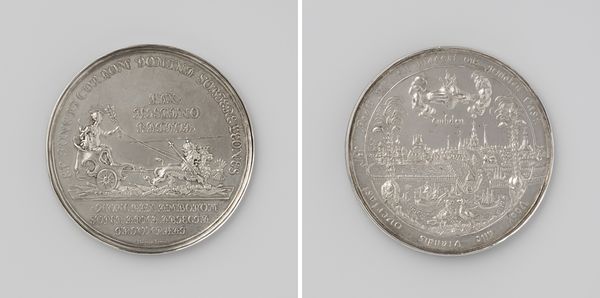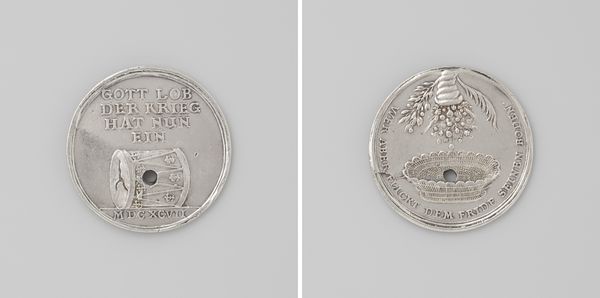
silver, print, engraving
#
silver
#
baroque
# print
#
history-painting
#
engraving
Dimensions: diameter 7 cm, weight 87.80 gr
Copyright: Rijks Museum: Open Domain
Curator: Here we have a Baroque silver engraving created in 1650 by Sebastian Dadler, commemorating "The Death of William II." Editor: Oh, this piece really captures the solemn grandeur of the era! There is almost an airy, celestial feeling but weighed down with the heavy subject matter. A very striking paradox, really. Curator: Dadler uses the circular format to divide the composition. On one side, we observe a rearing horse emerging from the cityscape, set against a backdrop of rather carefully rendered clouds and an allegorical inscription. The opposite side depicts a royal figure ascending to heaven amidst a cloud formation. Editor: Right. The horse has a raw, unbridled energy against that stately city below. Almost like a spirit breaking free, yet contained within this tiny silver disc. It feels potent—almost overwhelming, you know? And then the heavenly imagery, it feels very conventional and very baroque. Curator: Yes, the juxtaposition is rather effective. Semiotically, the rearing horse often represents power and vitality. Here, within the context of death, one might interpret it as symbolic of the life force extinguished or perhaps the ruler's legacy taking flight. I think we must consider the materiality: as a silver engraving, it demands close inspection to appreciate its technical achievement, especially regarding its detailed iconography. Editor: Definitely! This invites you to reflect upon mortality and power structures from that era. Plus, let's not forget, this is an object intended for remembrance and likely circulation. What narratives did this intend to spread? And to what audiences? You can tell that Dadler carefully weighed this commemorative project from different angles. He was very skilled in capturing political statements. Curator: It presents a layered perspective on historical representation, doesn’t it? Dadler’s technical ability and complex interplay of symbolic elements contribute significantly to its reading as an exemplary commemorative object. Editor: Indeed, it's a potent distillation of grief and ambition, perfectly fitting of the Baroque spirit. Curator: A fitting summary indeed.
Comments
No comments
Be the first to comment and join the conversation on the ultimate creative platform.
